Cherry Blossom Season in Japan is a breathtaking celebration of nature and tradition. From vibrant hanami gatherings to serene temple gardens, this fleeting spectacle captivates visitors with its beauty and cultural significance.
As winter fades, Japan awakens in a breathtaking display of pink and white. The arrival of cherry blossoms, known as sakura, marks the beginning of spring, drawing millions of visitors eager to witness this fleeting spectacle. But the season is more than just a natural wonder—it embodies centuries-old traditions, deep cultural significance, and moments of pure joy. Whether strolling beneath delicate petals, indulging in seasonal delicacies, or capturing stunning photographs, experiencing cherry blossom season is an unforgettable journey through Japan’s landscapes and heritage.
This brief yet mesmerizing period invites people to celebrate hanami, the cherished tradition of appreciating the beauty of flowers. Parks, gardens, and streets come alive as locals and tourists gather beneath the blossoms for picnics, music, and shared moments of wonder. Yet, cherry blossom season is not just about the flowers—it is a cultural experience rich in history and meaning.
Let’s explore the charm and significance of Japan’s beloved cherry blossom season.
The beauty of sakura
Japan’s cities, parks, and countryside transform every spring under a canopy of soft pink hues. The beauty of sakura is mesmerizing, with petals floating like confetti in the breeze, covering streets and rivers in a delicate floral blanket. The sight of fully bloomed cherry trees is a symbol of renewal and appreciation for life’s fleeting moments.
Some of the most picturesque places to admire cherry blossoms include:
- Ueno Park, Tokyo: Home to over 1,000 cherry trees, this park is one of Japan's most famous hanami (flower viewing) spots.
- Kyoto’s Philosopher’s Path: A tranquil stone walkway lined with sakura trees, offering a poetic experience for visitors.
- Mount Yoshino, Nara: A breathtaking destination with thousands of cherry trees cascading across the mountain slopes.
These locations attract photographers, artists, and travellers eager to immerse themselves in nature’s artistry. Families and friends gather for hanami picnics, a cherished tradition that brings people together under the blossoms, celebrating the arrival of spring.
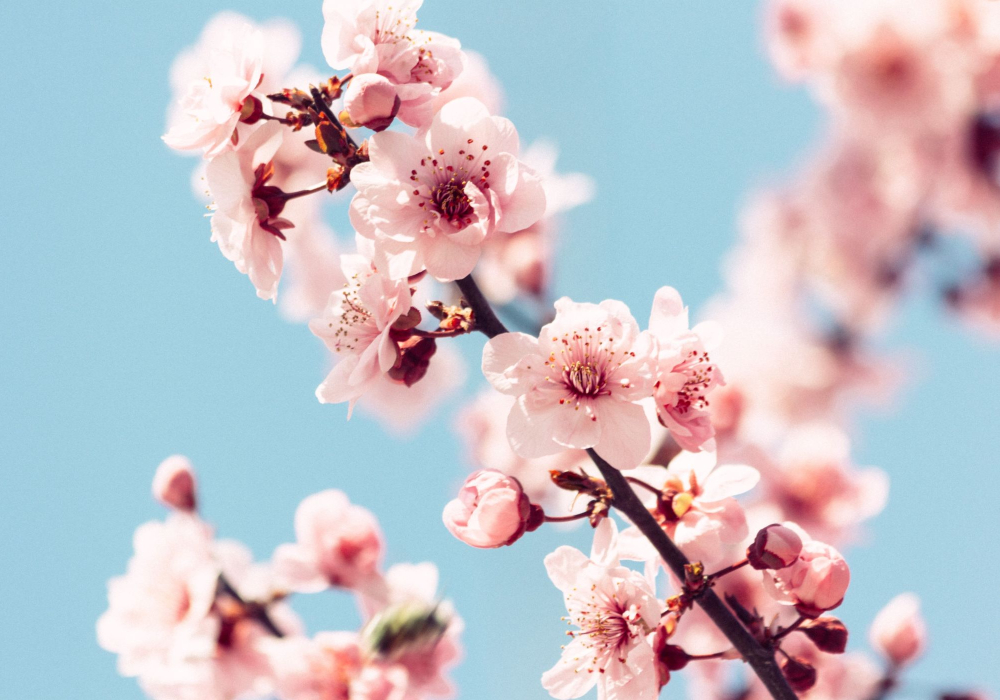
Cherry blossom blooming schedule
The timing of cherry blossoms varies depending on location and climate. Here’s a general guide to peak bloom times across Japan:
| Region | Viewing Time |
|---|---|
| Tokyo | Late March – Early April |
| Kyoto | Early April |
| Sapporo | Late April – Early May |
The short-lived bloom makes the experience even more special, urging visitors to embrace the moment before the petals drift away.
Cultural significance of sakura
Cherry blossoms hold deep cultural significance in Japan. They are intertwined with various traditions, festivals, and customs. The practice of hanami dates back to the Nara period (710-794 AD) and remains a cherished tradition.
Hanami involves gathering under blooming cherry trees to enjoy the beauty of sakura. People share food, drinks, and laughter, celebrating the arrival of spring. Schools and businesses often organize hanami events, fostering a sense of community and togetherness.
In addition to hanami, cherry blossoms are featured prominently in Japanese art, literature, and folklore. They symbolize life's fragility and fleeting nature, encouraging mindfulness and appreciation of the present.
Here's a brief look at how sakura is represented in different aspects:
- Symbolism: Sakura represents the fleeting nature of life, encouraging mindfulness and gratitude.
- Art and literature: Traditional ukiyo-e woodblock prints often depict cherry blossoms, while countless haiku poems capture their transient beauty.
- Spiritual meaning: Folklore tells of spirits residing in cherry trees; in some regions, sakura is seen as a sign of good fortune.
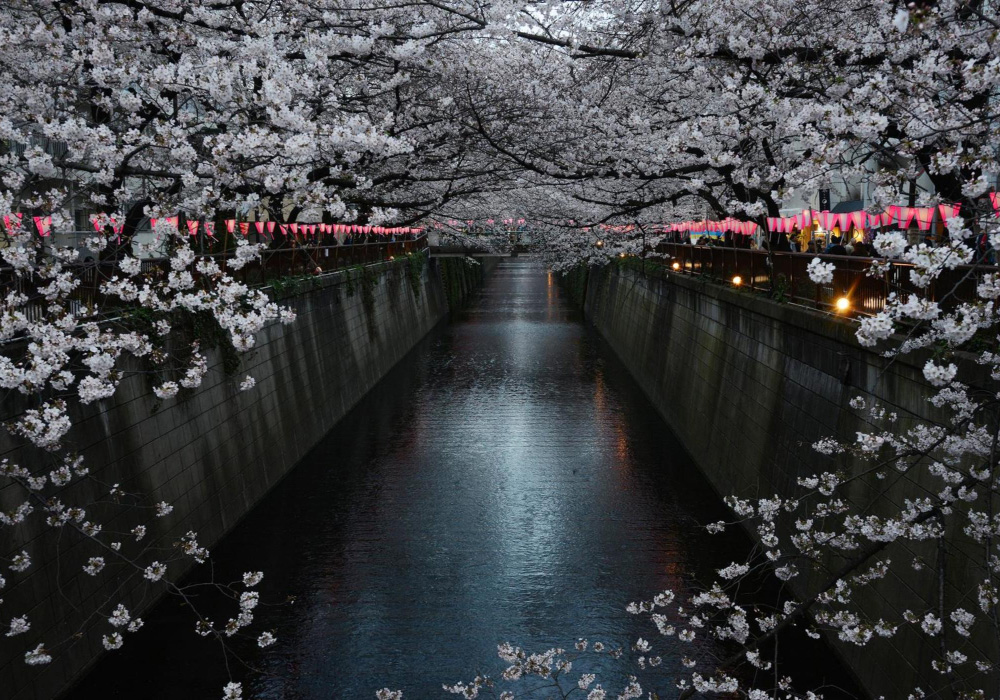
Best viewing spots
Japan offers countless locations to admire the cherry blossoms, from well-known parks to hidden gems that provide a more intimate experience.
Top parks for hanami
Japan has many parks that are perfect for cherry blossom viewing. These parks offer great facilities and beautiful scenery. Here are some of the best:
-
Ueno Park, Tokyo: Ueno Park is one of Tokyo's most popular spots for cherry blossom viewing. It has over 1,000 cherry trees. The park also offers a zoo and museums for visitors.
-
Maruyama Park, Kyoto: Maruyama Park is famous for its large weeping cherry tree. The park lights up at night, creating a beautiful atmosphere for an evening stroll.
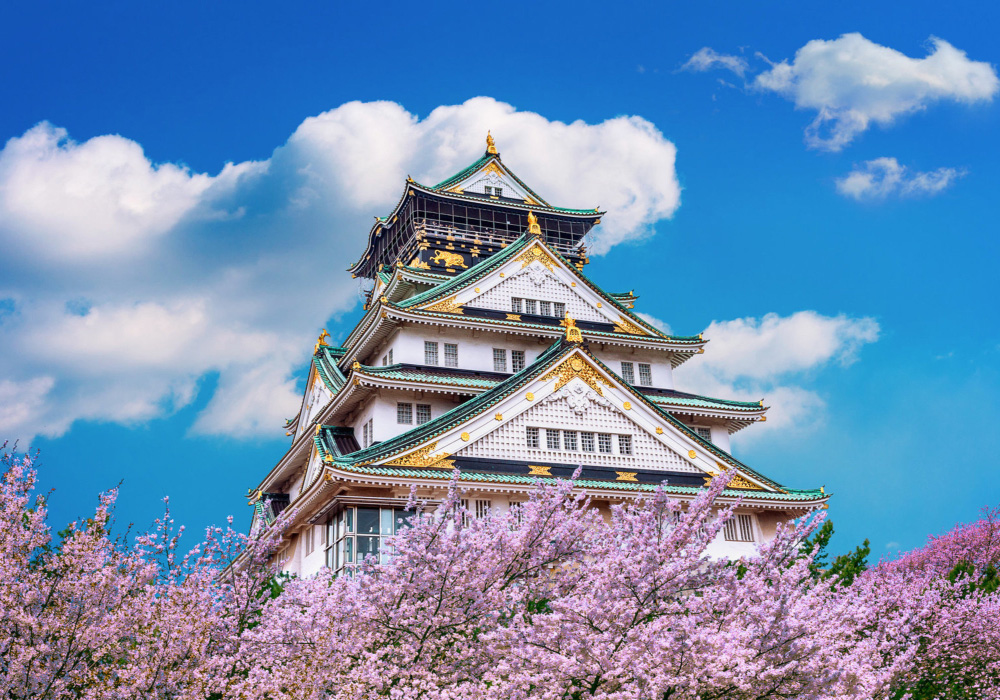
-
Osaka Castle Park, Osaka: This park has around 600 cherry trees. The castle in the background makes for stunning photographs.
-
Shinjuku Gyoen, Tokyo: Shinjuku Gyoen is a large park with a mix of Japanese and English gardens. It has over 1,000 cherry trees, making it a great spot for hanami (flower viewing).
Hidden gems
Besides the popular parks, Japan has many hidden gems for cherry blossom viewing. These spots are less crowded and offer unique experiences:
- Chidorigafuchi, Tokyo: This moat near the Imperial Palace is quiet. You can rent a boat to view the cherry blossoms from the water.
- Himeji Castle, Hyogo: Himeji Castle is a UNESCO World Heritage site. The cherry blossoms here contrast beautifully with the white castle.
- Takato Castle Park, Nagano: This park is known for its deep pink cherry blossoms. It has around 1,500 trees, creating a sea of pink.
- Mt. Yoshino, Nara: Mt. Yoshino has over 30,000 cherry trees. The mountain offers stunning views of the blossoms from different heights.
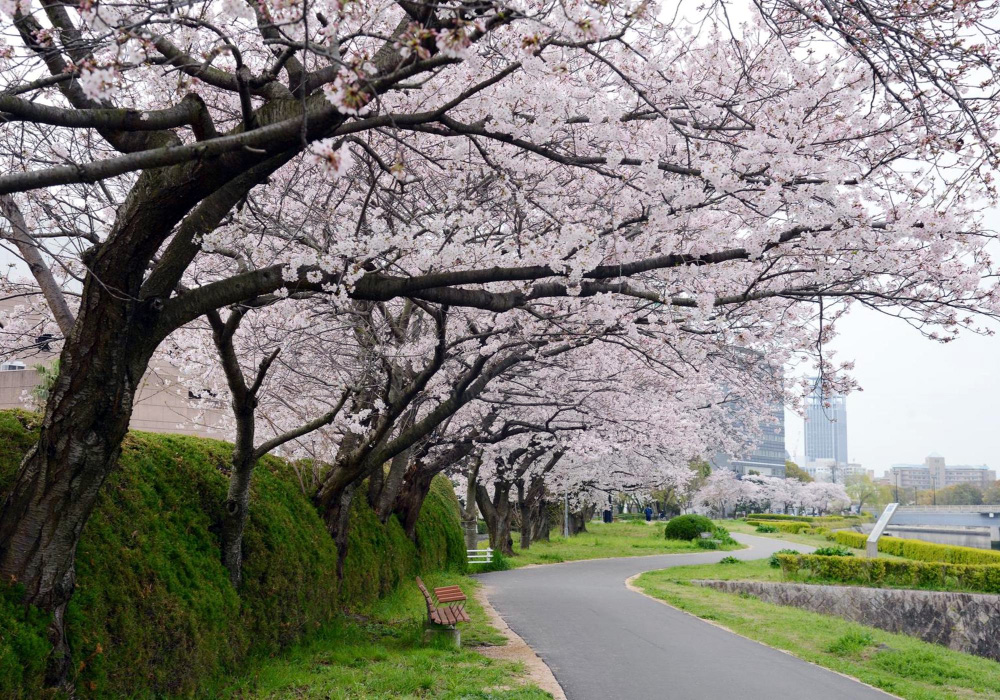
Seasonal festivals
Cherry blossom season isn’t just about admiring the blooms—it’s a time of celebration, with festivals across Japan featuring cultural performances, illuminated night views, and seasonal treats.
Hanami traditions
Hanami, which means "flower viewing," is an ancient Japanese tradition. People gather under cherry blossom trees to appreciate their fleeting beauty. This practice has been around for centuries and remains popular today. Key aspects of hanami traditions include:
- Picnics: Bento boxes, sake, and seasonal snacks are shared under the blossoms.
- Yozakura (nighttime viewing): Many parks light up the trees, creating a magical evening atmosphere.
- Sakura-themed Food: Special delicacies such as sakura mochi, pink rice cakes, and cherry blossom tea enhance the experience.
Many people wear traditional clothing like kimonos to add to the festive atmosphere.
Local celebrations
Each Japanese region has its unique way of celebrating the Cherry Blossom Season. Local festivals often include traditional music, dance, and food stalls. Some of the most famous celebrations are:
- Ueno Sakura Matsuri: Held in Ueno Park, Tokyo. This festival features hundreds of cherry trees, food stalls, and performances.
- Himeji Castle Festival: Located in Hyogo Prefecture. Visitors can enjoy blossoms around the historic Himeji Castle.
- Kyoto’s Maruyama Park: Known for its grand weeping cherry tree. The park is a popular spot for both locals and tourists.
Local celebrations often include traditional performances such as taiko drumming and folk dances. Food stalls offer regional specialties and sakura-themed snacks.
 Credit: livejapan.com
Credit: livejapan.com
Photography tips
Cherry Blossom Season in Japan is a magical time for photographers. The pink and white blossoms create stunning landscapes. Capturing these moments requires some skill. Here are some photography tips to make the most of this beautiful season.
Best times to shoot
The best times to shoot cherry blossoms are early morning and late afternoon. The light is softer and more flattering. This is known as the golden hour. During these times, shadows are less harsh, and colors are more vibrant.
Early morning benefits:
- Fewer crowds
- Soft, diffused light
- Possibility of dew on the petals
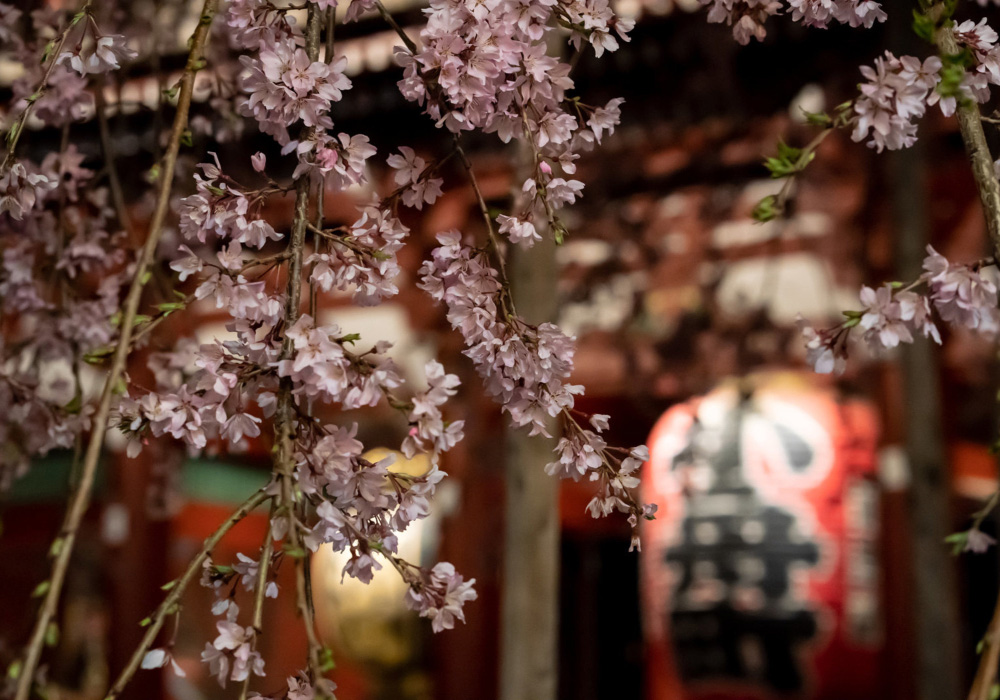
Late afternoon perks:
- Warm, golden tones
- Longer shadows for dramatic effect
- Sunset backgrounds
To get the best shots, plan your day around these times. Arrive early at popular spots. This allows you to find the perfect angle without distractions.
Composition techniques
Good composition makes a photo stand out. Here are some techniques to enhance your cherry blossom shots:
- Rule of thirds: Divide your frame into nine equal parts using two horizontal and two vertical lines. Place the subject at the intersections. This creates a balanced and interesting image.
- Leading lines: Use paths, rivers, or branches to lead the viewer’s eye to the main subject. This adds depth and guides the viewer through the scene.
- Framing: Frame the blossoms with other elements. This can be trees, buildings, or even people. Framing adds context and makes the photo more engaging.
- Background: Choose a simple background to highlight the cherry blossoms. A busy background can distract from the main subject.
Experiment with these techniques. They can turn a good photo into a great one. Practice makes perfect, so keep shooting!
Cherry blossom varieties
One fascinating aspect of this season is the variety of cherry blossoms that can be seen. Each type has its own unique charm and beauty, making the experience even more enchanting.
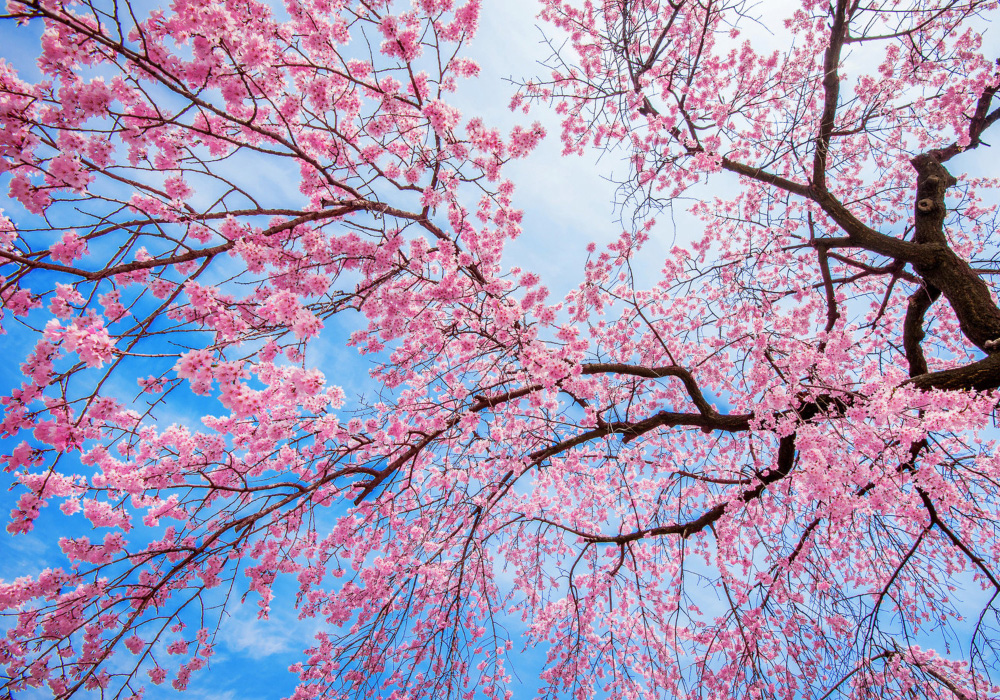
Common types
There are several common types of cherry blossoms that can be found throughout Japan. These varieties are widely recognized and loved by both locals and tourists. Here are some of the most popular ones:
- Somei Yoshino: This is Japan's most famous type of cherry blossom. Known for its pale pink petals, it blooms in late March to early April. Somei Yoshino trees are often seen in parks and along streets.
- Yamazakura: This variety blooms slightly later than Somei Yoshino, usually in mid-April. Yamazakura has white to pale pink petals and is commonly found in mountainous regions.
- Shidarezakura: Also known as weeping cherry, Shidarezakura has cascading branches covered in pink blossoms. These trees create a stunning visual effect, especially when planted near water.
Unique species
In addition to the common types, Japan is home to several unique species of cherry blossoms. These varieties offer something different from the usual and are often sought after by enthusiasts. Some notable examples include:
- Kawazu-zakura: This species is known for its early blooming period, often starting in February. Kawazu-zakura has bright pink petals and is primarily found in the Kawazu region.
- Ichiyo: Ichiyo cherry blossoms have a distinctive double layer of petals, giving them a fuller appearance. They bloom in mid-April and are usually pale pink.
- Ukon: This rare type of cherry blossom has yellowish petals, which is quite unusual for Sakura. Ukon blooms in late April and can be seen in select locations.
Travelling during sakura
The timing of sakura season varies depending on the region. The cherry blossoms typically bloom between late March and early April. Here is a general timeline for different areas:
- Tokyo and Kyoto: Late March to early April
- Osaka: Late March to early April
- Fukuoka: Late March
- Sapporo: Late April to early May
Check the forecast to maximize your chances of seeing the cherry blossoms at their peak. Local websites and apps provide regular updates. It's also helpful to keep track of the blooming status on social media platforms.
Booking accommodations early is crucial. Popular spots fill up quickly during this season. Consider staying in smaller towns near major cities. They offer a quieter experience while still being close to the main attractions. Opt for flexible travel dates if possible. This increases your chances of catching the blossoms at their best.
Sakura-inspired culinary delights
During Cherry Blossom Season, many restaurants and cafes offer sakura-inspired dishes. These dishes not only look beautiful but also taste amazing. Here are some popular sakura-inspired dishes:
- Sakura Mochi: A traditional rice sweet filled with red bean paste. It is wrapped in a salted cherry leaf.
- Sakura Sushi: Sushi rolls that use sakura petals for flavour and colour. They are often served with a sprinkle of edible flowers.
- Sakura Soba: Buckwheat noodles made with sakura petals. They have a subtle cherry blossom flavour and are often served cold.
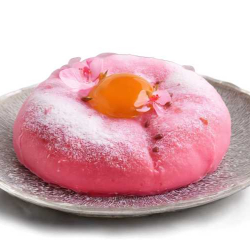
Another must-try dish is Sakura Tempura. This is tempura made with sakura leaves and petals. The result is a light and crispy delight with a hint of floral flavour. Many chefs get creative with sakura, making dishes like sakura-flavoured rice and even sakura pasta.
Traditional snacks
Traditional snacks also get a sakura twist during this season. These snacks are perfect for enjoying under the cherry blossoms. Here are some traditional sakura snacks:
- Sakura Senbei: Rice crackers flavoured with sakura. They are crunchy and have a unique floral taste.
- Sakura Manju: Steamed buns filled with sweet red bean paste and sakura. They are soft and delicious.
- Sakura Dango: Skewered rice dumplings with a sakura flavour. They are often pink, white, and green in colour.
Another favorite is Sakura Yokan. This is a jelly-like dessert made from red bean paste and sakura. It’s sweet and has a smooth texture. For a refreshing treat, try Sakura Ice Cream. This ice cream has a light and subtle cherry blossom flavor. It’s perfect for a sunny day under the cherry trees.
Conclusion
Cherry blossom season in Japan is more than a picturesque event—it’s a cultural celebration, a time of joy, and a reminder of nature’s fleeting beauty. From historical hanami traditions to breathtaking landscapes, the experience leaves an unforgettable impression on all who witness it.
Whether you’re picnicking in a bustling city park, admiring illuminated blossoms at night, or savouring sakura-themed delicacies, the magic of this season is something to be cherished. Planning your visit around peak bloom, exploring both famous and hidden spots, and embracing the traditions will make your cherry blossom journey truly unforgettable.
Japan’s cherry blossoms remind us to pause, appreciate, and celebrate the beauty of the moment—an experience that lingers long after the petals have fallen.

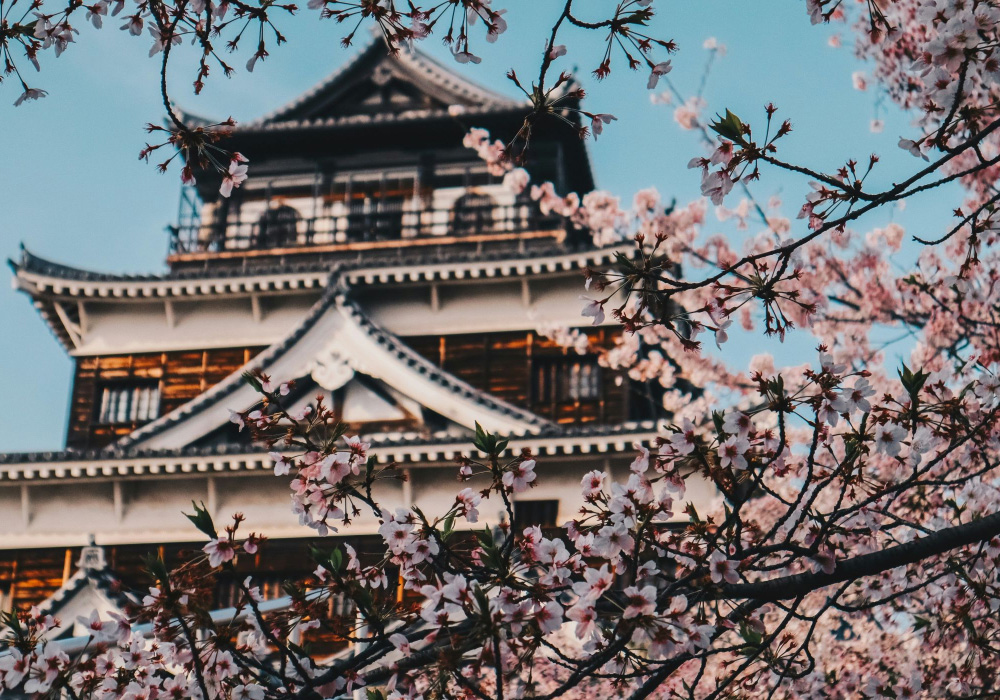


Comments powered by CComment